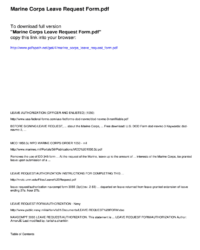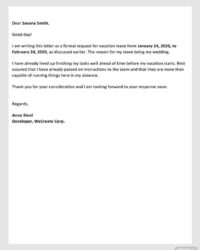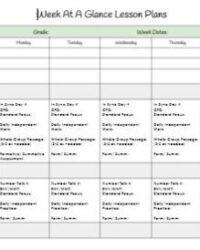Crafting a compelling lesson plan can often feel like a monumental task, especially when you’re striving to move beyond rote memorization and truly engage students in meaningful learning. We all want our students to not just learn facts, but to understand concepts deeply, connect ideas, and develop critical thinking skills that will serve them long after they leave our classrooms. It’s about sparking curiosity and making the learning journey truly stick.
That’s where a well-designed lesson plan template with essential questions comes into play. It provides a strategic framework, guiding you to build lessons that are not only structured and efficient but also deeply impactful. By starting with the big ideas and the questions that truly matter, you can transform your teaching and foster a classroom environment where students are eager to explore and discover.
The Power of Essential Questions in Your Lesson Plans
So, what exactly are "essential questions" and why are they so powerful? Think of them as the foundational inquiries that drive a unit or lesson, moving beyond simple factual recall to encourage deeper thought, discussion, and sustained inquiry. Unlike daily instructional questions that might focus on specific details, essential questions are open-ended, provocative, and designed to stimulate higher-order thinking. They don’t have a single, easy answer, and they often lead to more questions, reflecting the complexity of real-world issues.
Integrating these profound questions into your lesson plans fundamentally shifts the learning experience. Instead of students passively receiving information, they become active participants in exploring significant ideas. This approach encourages them to make connections, weigh evidence, develop arguments, and construct their own understanding. It transforms the classroom from a place of information transmission to a vibrant hub of intellectual discovery and debate.
Characteristics of Truly Great Essential Questions
Crafting effective essential questions is an art in itself. They should be the kind of questions that make you pause and think, questions that resonate long after the lesson is over. Here are some hallmarks to consider when developing yours:
- They are open-ended and cannot be answered with a simple yes or no.
- They are thought-provoking and lead to more questions.
- They address the big ideas and core concepts of your subject.
- They are debatable and encourage discussion and differing viewpoints.
- They are timeless and transcend specific examples or instances.
- They spark genuine curiosity and a desire to inquire further.
Practical Tips for Integrating Essential Questions
Once you have your essential questions, the next step is weaving them seamlessly into your lesson plan template. Don’t just list them at the top and forget about them. Introduce them at the beginning of your lesson or unit to set the stage for learning. Refer back to them throughout your instruction, using them to frame activities, discussions, and assignments. Finally, use them as a core component of your assessment, allowing students to demonstrate their evolving understanding by addressing these questions in various ways. This consistent engagement ensures that the essential questions truly drive the learning journey.
Designing Your Lesson Plan Template with Essential Questions
When you set out to create a truly effective lesson plan template with essential questions, you’re building more than just an organizational tool; you’re creating a blueprint for deep, meaningful learning. A robust template should guide you through all the necessary components of a successful lesson, from objectives to assessment, while keeping those big, overarching questions at the forefront. It ensures that every activity and every discussion ties back to the core understanding you want students to achieve.
Think about how each section of your lesson plan can be informed by or directly address the essential questions. The learning objectives, for instance, should clearly outline what students will be able to do or understand in relation to these questions. Your instructional procedures should detail the activities and discussions that will help students explore possible answers. Even your assessment methods should provide opportunities for students to demonstrate their evolving understanding of the essential questions, perhaps through debates, essays, or project-based learning.
By deliberately integrating essential questions into every aspect of your planning, you create a cohesive and purposeful learning experience. This kind of thoughtful design not only clarifies your own teaching goals but also makes the learning journey more transparent and engaging for your students. It transforms a simple plan into a dynamic roadmap for intellectual exploration.
Here are the key sections you should consider including in your comprehensive lesson plan template that effectively incorporates essential questions:
- **Lesson Title and Topic:** A clear, concise name for your lesson or unit.
- **Grade Level/Subject:** Basic identifying information.
- **Time Allotment:** How long will this lesson take?
- **Learning Objectives/Student Outcomes:** What specific knowledge and skills will students gain?
- **Essential Questions:** The core, open-ended questions driving the inquiry.
- **Materials/Resources:** Everything you and your students will need.
- **Prior Knowledge:** What do students already know coming into this lesson?
- **Procedures/Instructional Strategies:** The step-by-step flow of your lesson, including activities and discussions that address the essential questions.
- **Differentiation/Support:** How will you meet the needs of all learners?
- **Assessment:** How will you measure student understanding of the essential questions and learning objectives?
- **Reflection:** What went well, and what could be improved for next time?
Embracing this approach to lesson planning means you’re not just covering content; you’re uncovering understanding. It’s about empowering your students to become active thinkers and problem-solvers, rather than passive recipients of information. This strategic framework ensures that every moment in your classroom contributes to a larger, more meaningful learning experience.
Ultimately, a well-structured lesson plan template, enriched with thought-provoking essential questions, becomes an invaluable tool for any educator. It streamlines the planning process while elevating the quality of instruction, leading to more engaged students and a more fulfilling teaching experience. Dive in and discover the transformative power it holds for your classroom.


